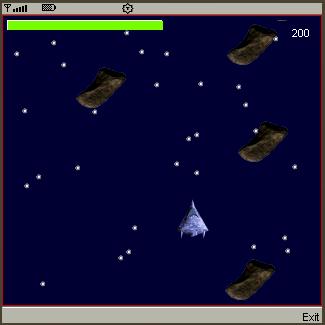How To Run J2me Program In Wireless Toolkit 2.5.2

J2ME First program. After installing the required tools(JDK and Wireless Toolkit), now you are ready to write your first program to run on a mobile device like a mobile phone. Sun Java Wireless Toolkit 2.5.2 for CLDC Download. (formerly known as J2ME Wireless Toolkit) is a set of tools for creating Java applications that run on devices.
How to Install: Java Wireless Toolkit (J2ME 2.5.2) on a Windows Machine How to Install: Java Wireless Toolkit (J2ME 2.5.2) on a Windows Machine Mobile Game Development Overview Java ME Platform SDK is a state-of-the-art toolbox for developing mobile applications. It provides the following features: • device emulation, • a set of utilities for rapid development of Java ME applications. Follow these instructions to install J2ME 2.5.2 on a Windows machine. These instructions were tested on an installation of Windows 7.
Download and Install J2ME 2.5.2 • Login to an Administrator account on your Windows machine. • Verify that you have an installation of Java Standard Edition Development Kit (JDK) 6 or later.
If not, you can install one using. Now that you have a JDK installed, you are ready to install J2ME 2.5.2 • Download the Sun Java Wireless Toolkit 2.5.2 for CLDC from here: • Follow these instructions for installation • Find the Required File you downloaded in step 3 above and double click it to run it. You may get a message that says 'The publisher could not be verified. Are you sure you want to run this software?'
Ignore the warning and run it by clicking the Run button. It will not harm your system. • Click the Next button when the installSheild Wizard appears. • Accept the License Agreement by clicking the Accept button. • You will now be asked to choose your Java [TM] Virtual Machine Location. Accept the default or browse to the location of your choice JVM.
• Click the Next button. • The next screen will ask you to choose a destination location for installing Sun Java Wireless Toolkit. Accept the default location or select one of your choice. • Click the Next button.
• Select a Program (start menu) Folder the installation (or again, accept the default). • Click the Next button.
• Make sure the box is selected to Check for Product Updates and click the Next button. • When asked to Start Copying Files, click the Next button. • Wait a couple minutes while it installs the updates, then click the Finish button. That completes your installation. Verify that your installation works Now that you have a Java Wireless Toolkit installed on your machine, you can open existing projects, create new projects, and run them on a mobile device emulator or on an actual physical device. Follow the instructions below for opening an existing project and running it in a mobile device emulator. • Locate the Sun Java (TM) Wireless Toolkit 2.5.2_01 for CLDC Folder on your Windows Machine.
You can do this by clicking on Start Menu → All Programs, and scrolling to the folder. • Expand the folder in step 1 and click on Wireless Toolkit 2.5.2. • Click Open Project and select from the list of available projects. • Double click on the project you selected (e.g., Audiodemo). • Click the Run button and voila! You are now ready to run the selected application on your mobile device emulator.
• Select from the games provided (e.g., Bouncing Ball). Select a background of your choice and have fun with it. Configuring Eclipse for J2ME Development Follow to configure Eclipse for developing your J2ME applications.
Add Windows XP systems to Vista's Network Map with the LLTD Responder. Microsoft has released the LLTD Responder for Windows XP systems. The Run button and begin the Software Update. I have recently been trying to get my XP computers to show up on my Vista Network Map but I have SP3 installed and the Link Layer Topology Discovery (LLTD) protocol isn't an option any more. Installing Link Layer Topology Discovery (LLTD) on Windows XP Posted on January 8, 2009 by Daniel Petri in Windows Vista with Share 0 Tweet 0 Pin it 0 +1 Reddit Share 0 Share. Lltd protocol.